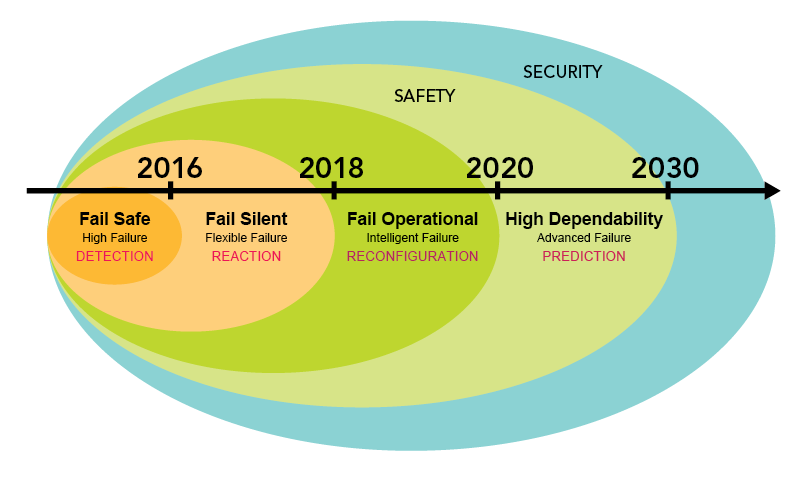See three examples of how functional safety makes multiple NXP applications smarter and safer.
#1 ADAS is fueling the need for functional safety
Functional safety is not a new concept, but it is taking on a new
importance within the automotive market due to Advanced Driver Assistance Systems (ADAS). This is sparked by the
need to be absolutely certain that electronic systems are going to function as we intend them to, without
malfunctioning. Functional safety means that potentially dangerous conditions are detected, activating
preventative or corrective mechanisms to stop or mitigate the hazardous event.
You have probably all heard stories of accidents in factories when a machine doesn’t stop in time to avoid
serious bodily harm to a factory worker, or of smartphones burning up from malfunctioning batteries. For the
automotive market, where electronic systems are learning how to take over decision taking from human drivers,
recognizing and reacting to possible random failures is vitally important. After all, wouldn’t you rather be
totally confident that your vehicle will be able to decide what to do if there is a sudden malfunction with the
steering, braking or transmission?
#2 ISO 26262 defines how functional safety is handled
That’s why the automotive version of the functional safety standard, called ISO 26262, is followed when
developing these systems. ISO 26262 has different steps to decide how functional safety should be handled. One of
these steps decides on the Automotive Safety Integrity Level (ASIL) to apply to the application. ASIL looks at what
would happen to the driver, and other road users, if there is a failure. So, it looks at the outcome based on
severity, exposure and controllability if the application fails. It grades the outcome from A to D, with D being the
most safety critical level that should follow the strictest tests.

#3 NXP is leading the industry towards zero accidents
There may seem to be a bewildering number of fail-something concepts being bandied around, but at NXP we talk about
the evolution from fail-safe to high-dependability. This includes 4 specific steps in the evolution of functional
safety:
- Fail-safe: the system goes into safe mode when a failure occurs.
- Fail-silent: the system recognizes that it is receiving the wrong information due to a fault, so the ongoing
operation moves to degraded mode.
- Fail-operational: sometimes also referred to as fault-tolerant, a failure in one component does not stop the
whole system from working correctly, the system reconfigures itself to compensate for the fault.
- High-dependability: this is advanced failure prediction.

Functional safety is important to NXP, so much so that we created a program called SafeAssure to help you simplify
the process of achieving system compliance with the functional safety standards used in both the automotive and
industrial markets.
Visit the webpage here to learn more about this or watch this recorded webinar to learn more about functional safety in action.






